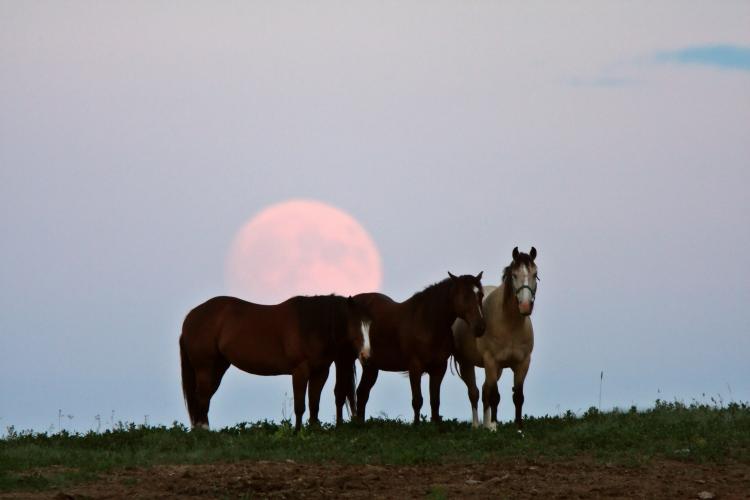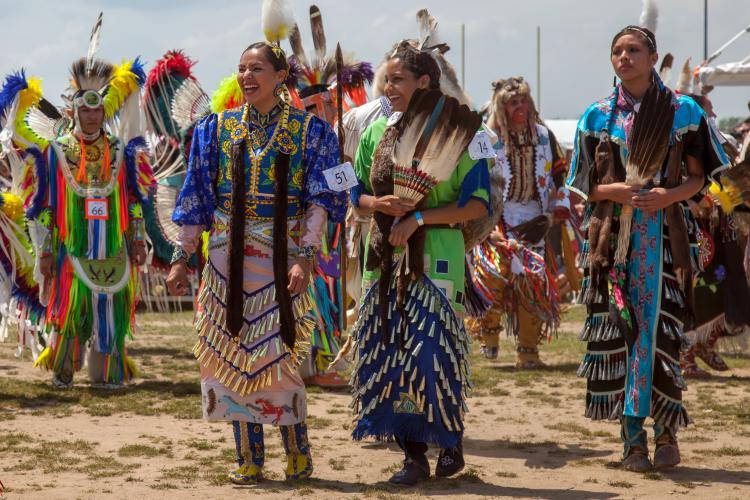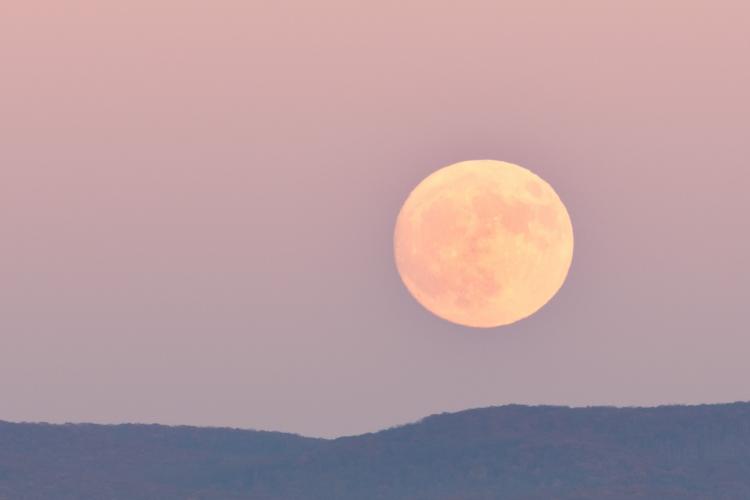Full Moons had given names in many ancient cultures. The Full Moon names we use today often reflect the changing seasons and nature, like Harvest Moon, Strawberry Moon, or Snow Moon.

Full Moon names have roots in nature.
©iStockphoto.com/bobloblaw
In ancient times, it was common to track the changing seasons by following the lunar month rather than the solar year, which our modern calendar is based on.
Ancient Month Names
For millennia, people across Europe, as well as Native American tribes, named the months after features they associated with the seasons in the Northern Hemisphere, and many of these names are very similar or identical. Some Native names are often attributed to tribes who lived in a vast area stretching from New England to Lake Superior, and whose languages are related. They are sometimes called Algonquian or Algonkian peoples, but they are not to be confused with the Algonquin tribe who lives in Canada. However, other sources list completely different Native American Moon names.
Full Moons with No Name
Some years have 13 Full Moons, which makes at least one of them a Blue Moon, as it doesn't quite fit in with the traditional Full Moon naming system. However, this is not the only definition of a Blue Moon.
About every 19 years, there is no Full Moon in February. This is one of several definitions of the term Black Moon. The other definitions refer to a New Moon which does not fit in with the equinoxes or solstices, similar to a Blue Moon.
Latin Names Took Over
When the Julian calendar was introduced in 45 BCE, Latin month names gradually became more common in Europe. However, the ancient Pagan names were not forgotten. Old High German month names were introduced by Charlemagne (Charles the Great) who ruled as King of the Franks and later Emperor of the Romans from 774 to 814. And Old English or pre-Christian Anglo-Saxon month names were collected by the English Monk Venerable Bede in 725.
Adopted as Full Moon Names

Today, many of these ancient month names have been adopted as names for the Full Moon of each month. A common explanation, published in the Old Farmer's Almanac, is that Colonial Americans adopted Native American names and incorporated them into the modern calendar. However, it seems that the Full Moon names we use today also have Anglo-Saxon and Germanic roots.
January: Wolf Moon
The Full Moon in January is the Wolf Moon named after howling wolves, which may stem from the Anglo-Saxon lunar calendar. Other names: Moon After Yule, Old Moon, Ice Moon, and Snow Moon.
February: Snow Moon
The Snow Moon is the Full Moon in February, named after the snowy conditions. Some North American tribes named it the Hunger Moon due to the scarce food sources during mid-winter, while other names are Storm Moon and Chaste Moon, but the last name is more common for the March Full Moon.
March: Worm Moon
The last Full Moon of the winter season in March is the Worm Moon because of the earthworms that come out at the end of winter. Is is also known as the Crow Moon, Crust Moon, Sap Moon, Sugar Moon, and Chaste Moon. The Old English/Anglo-Saxon name is Lenten Moon.
April: Pink Moon
The Full Moon in April is the Pink Moon, from the pink flowers – phlox – that bloom in the early spring. Other names for this Full Moon include Sprouting Grass Moon, Fish Moon, Hare Moon, and the Old English/Anglo-Saxon name is Egg Moon. It is also known as the Paschal Moon because it is used to calculate the date for Easter.

May: Flower Moon
The May Full Moon is known as Flower Moon to signify the flowers that bloom during this month. Other names for the Full Moon in May are Corn Planting Moon, and Milk Moon from Old English/Anglo-Saxon.
June: Strawberry Moon
June’s Full Moon is the Strawberry Moon as these little red berries ripen at this time. Other names are Hot Moon, Mead Moon, and Rose Moon.
July: Buck Moon
The Full Moon for the month of July is called Buck Moon to signify the new antlers that emerge on deer buck's foreheads around this time. This Full Moon is also known as Thunder Moon, Wort Moon, and Hay Moon from Old English/Anglo-Saxon.
August: Sturgeon Moon
The Full Moon for August is called Sturgeon Moon because of the large number of fish in the lakes where the Algonquin tribes fished. Other names for this Full Moon include Green Corn Moon, Barley Moon, Fruit Moon, and Grain Moon from Old English/Anglo-Saxon.
September / October: Harvest Moon

Technically, the Harvest Moon is the Full Moon closest to the September equinox around September 22. Most years it is in September, but around every three years, it is in October. The Harvest Moon is the only Full Moon name which is determined by the equinox rather than a month.
September: Corn Moon
The Full Moon in the month of September in the Old Farmer's Almanac is called Harvest Moon, which corresponds with the Old English/Anglo-Saxon name, while other names are Corn Moon or Full Corn Moon or Barley Moon.
October: Hunter's Moon
Every three years, the Hunter's Moon is also the Harvest Moon. Traditionally, people in the Northern Hemisphere spent the month of October preparing for the coming winter by hunting, slaughtering and preserving meats for use as food. This led to October’s Full Moon being called the Hunter’s Moon, Dying Grass Moon, and Blood Moon or Sanguine Moon. However, this should not be confused with a Total Lunar Eclipse – Blood Moon.
November: Beaver Moon
According to folklore, the Full Moon in November is named after beavers who become active while preparing for the winter. It is also known as Frosty Moon, and along with the December Full Moon some called it Oak Moon. Traditionally, if the Beaver Moon is the last Full Moon before the winter solstice, it is also called the Mourning Moon.
December: Cold Moon
December is the month when winter begins for most of the Northern Hemisphere, and the Full Moon is called the Cold Moon. The Old English/Anglo-Saxon name is the Moon Before Yule, while another name is Wolf Moon, however, this is more common for the January Full Moon.
No comments:
Post a Comment